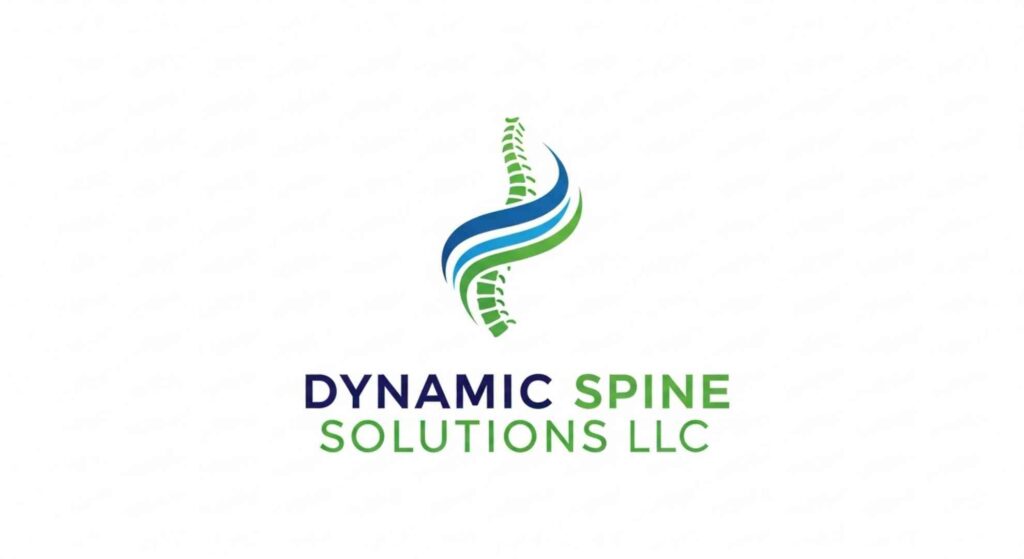Chronic back pain can be a debilitating, life-altering condition affecting millions of people worldwide. For decades, the primary surgical solution for severe spinal issues has been fusion—a procedure that permanently locks vertebrae together. While effective for stabilization, fusion often comes at the cost of natural movement. In the evolving landscape of spinal health, a new philosophy is taking hold, one that prioritizes motion. At the forefront of this revolution is Dynamic Spine Solutions LLC, a medical technology company dedicated to creating a new standard of care that preserves mobility and improves patient outcomes.
This article provides a deep dive into the mission, technology, and future vision of Dynamic Spine Solutions LLC. We will explore how their innovative approach is changing the conversation around spine surgery and what advancements we can expect as we look toward 2025 and beyond.
What is Dynamic Spine Solutions LLC?
Dynamic Spine Solutions LLC is an innovative medical device company specializing in the development and commercialization of advanced technologies for treating spinal disorders. Unlike traditional approaches that focus on rigid fixation, the core philosophy of Dynamic Spine Solutions LLC is motion preservation.
Their mission is built on a simple yet profound idea: the human spine is designed to move. Therefore, the most effective treatments should work with the body’s natural biomechanics, not against them. They achieve this by engineering sophisticated implants and systems that stabilize the spine while still allowing for a controlled, functional range of motion. This approach represents a significant paradigm shift from spinal fusion, aiming to provide pain relief without sacrificing mobility.
The Problem with Traditional Spine Surgery: Why a Change is Needed
For over a century, spinal fusion has been the gold standard for treating conditions like degenerative disc disease, spondylolisthesis, and severe instability. The procedure involves removing a damaged disc, inserting a bone graft, and using hardware like plates, rods, and screws to fuse two or more vertebrae into a single, solid bone.
While fusion can successfully eliminate painful motion at the treated level, it has known drawbacks:
-
Loss of Flexibility: The fused segment is permanently immobilized, which can limit a patient’s overall mobility.
-
Adjacent Segment Disease (ASD): By locking one part of the spine, additional stress is transferred to the vertebrae above and below the fusion. This can accelerate wear and tear on these adjacent discs, often leading to new pain and the potential need for further surgery down the line.
-
Lengthy Recovery: The process of bone fusion is slow, often requiring a long and restrictive recovery period.
Recognizing these limitations, researchers and engineers at companies like Dynamic Spine Solutions LLC sought a better way—a solution that could provide stability and relief while protecting the long-term health of the entire spine.
The Core Technology: A Deep Dive into Innovation
The product portfolio and research pipeline at Dynamic Spine Solutions LLC are centered on a class of technologies known as “dynamic stabilization” or “motion preservation” systems. These are not a single product but a category of advanced implants designed to support the spine intelligently.
Motion Preservation: The Guiding Principle
Motion preservation technology is the cornerstone of the company’s vision. The goal is to offload pressure from a damaged or degenerated disc and guide spinal movement, rather than eliminating it entirely. This helps maintain a more natural distribution of forces across the spine, which is key to preventing problems like Adjacent Segment Disease. These systems act more like an internal brace or a shock absorber than a rigid lock.
Annular Closure and Repair Technologies
One of the most common spinal procedures is a discectomy, where a surgeon removes the portion of a herniated disc that is pressing on a nerve. A major risk after this procedure is reherniation, where the disc material pushes out again through the weakened outer wall (the annulus fibrosus).
Looking toward 2025, a key area of focus for Dynamic Spine Solutions LLC is the development of advanced annular closure devices. These are specialized implants designed to seal the defect in the disc wall after a discectomy.
-
How it Works: Imagine patching a tire. An annular closure device acts as a barrier, blocking the hole in the disc to prevent the nucleus from leaking out again.
-
The Benefit: By significantly reducing the risk of reherniation, these devices can decrease the need for more aggressive secondary surgeries like fusion. This technology, exemplified by devices like the Barricaid® (a well-known product in this space), aligns perfectly with the company’s mission to provide less invasive, more durable solutions.
Dynamic Stabilization Systems
For more significant instability or degenerative conditions, dynamic stabilization systems offer a compelling alternative to rigid fusion. These systems typically use flexible rods made from advanced polymers like PEEK, combined with specialized pedicle screws.
-
Flexible Fixation: Unlike rigid titanium rods used in fusion, these flexible rods can bend slightly with the body’s movement. This provides sufficient support to relieve pain but avoids the absolute stiffness of a fusion.
-
Shared Load: The system shares the load with the natural structures of the spine, preventing the drastic stress transfer that causes ASD. Patients often report a more “natural” feeling post-surgery compared to those with fusions.
These technologies are at the heart of what makes Dynamic Spine Solutions LLC a leader in the field. They are not just creating implants; they are engineering solutions that respect and restore the spine’s natural function.
Looking Ahead to 2025: The Future is Dynamic
The field of spine surgery is on the cusp of a technological renaissance, and Dynamic Spine Solutions LLC is positioned to be a major driver of this change. Here’s what the future holds as we look toward 2025 and beyond.
1. AI-Powered Surgical Planning and Personalized Implants
Artificial intelligence (AI) and machine learning are set to revolutionize surgical planning. By 2025, we expect to see software platforms that can analyze a patient’s unique anatomy from CT and MRI scans to:
-
Predict Surgical Outcomes: AI algorithms can simulate how different implants will perform in a specific patient, helping surgeons choose the optimal size and type of dynamic stabilization system.
-
Enable Patient-Specific Implants: The ultimate goal is personalization. Instead of off-the-shelf sizes, companies will use 3D printing and advanced manufacturing to create implants tailored perfectly to a patient’s vertebrae. This ensures a better fit, improved stability, and more predictable outcomes.
2. The Integration of Biologics and Regenerative Medicine
The next frontier is combining mechanical solutions with biological ones. The devices from Dynamic Spine Solutions LLC provide the structural support, but what if they could also promote healing?
By 2025, we anticipate seeing dynamic implants coated with or infused with biologics:
-
Stem Cells: Implants could act as a scaffold to deliver stem cells directly to the damaged disc, encouraging natural tissue regeneration.
-
Growth Factors: Specialized proteins that stimulate cell growth could be incorporated to accelerate bone healing around screws or promote the health of surrounding tissues.
This hybrid approach—marrying biomechanics with biology—promises to create a truly regenerative solution for spine care.
3. Advancements in Minimally Invasive Techniques (MIS)
Dynamic stabilization systems are perfectly suited for minimally invasive surgery (MIS). Because they are more streamlined than bulky fusion hardware, they can be implanted through smaller incisions.
The future will see even more refined MIS techniques and instrumentation developed in partnership with companies like Dynamic Spine Solutions LLC. This means:
-
Less muscle and tissue damage.
-
Reduced blood loss.
-
Lower risk of infection.
-
Significantly faster recovery times and less post-operative pain.
Patients could potentially go home the same day or the next day for procedures that once required a lengthy hospital stay.
Who is a Candidate for Dynamic Spine Solutions?
The technologies developed by Dynamic Spine Solutions LLC are not for every patient, but they offer a powerful new option for a significant group. Ideal candidates often include individuals with:
-
Degenerative Disc Disease: Particularly in its early to moderate stages, where preserving motion is highly desirable.
-
Lumbar Disc Herniation: Especially those at high risk of reherniation who could benefit from an annular closure device.
-
Spinal Stenosis: In some cases, dynamic stabilization can decompress nerves without the need for a rigid fusion.
-
Adjacent Segment Disease: For patients who have already had a fusion and are developing problems at the next level, a dynamic system can be a less aggressive solution than extending the fusion.
The most important step for any patient is a thorough consultation with a board-certified spine surgeon who is knowledgeable about both fusion and motion-preserving technologies.
Frequently Asked Questions (FAQ)
1. Is dynamic spine surgery better than spinal fusion?
It’s not about “better” but “different.” For the right patient, a dynamic solution can offer significant advantages, such as preserved motion and reduced risk of ASD. For severe instability or deformity, fusion may still be the most appropriate choice. The decision is highly individualized.
2. What are the risks associated with these technologies?
Like any surgery, there are risks, including infection, nerve damage, and implant-related complications like loosening or breakage. However, because these systems are designed to work with the body’s biomechanics, the risk of specific issues like ASD is theoretically lower than with fusion.
3. How long is the recovery?
Recovery is typically faster than with spinal fusion because you are not waiting for bone to fuse. Patients can often begin physical therapy and return to non-strenuous activities sooner. Your surgeon will provide a specific timeline based on your procedure and overall health.
4. Are these procedures covered by insurance?
Coverage for motion-preserving technologies is constantly improving as more long-term data proves their effectiveness. Many major insurance providers now cover specific dynamic stabilization and annular closure devices. It is essential to check with your insurance provider for pre-authorization.
Conclusion: A New Era in Spinal Health
The days of a one-size-fits-all approach to spine surgery are numbered. The future is tailored, biological, and, above all, dynamic. Dynamic Spine Solutions LLC stands at the forefront of this evolution, championing a philosophy that prioritizes the patient’s long-term quality of life. By creating technologies that stabilize, support, and heal while preserving the spine’s natural ability to move, they are not just treating a condition—they are restoring a life in motion.
As we move toward 2025, the integration of AI, biologics, and minimally invasive techniques will only accelerate this trend. If you or a loved one is facing the prospect of spine surgery, it’s crucial to explore all your options. Discussing the innovative approaches offered by companies like Dynamic Spine Solutions LLC with your specialist could be the first step toward a more mobile and pain-free future.



